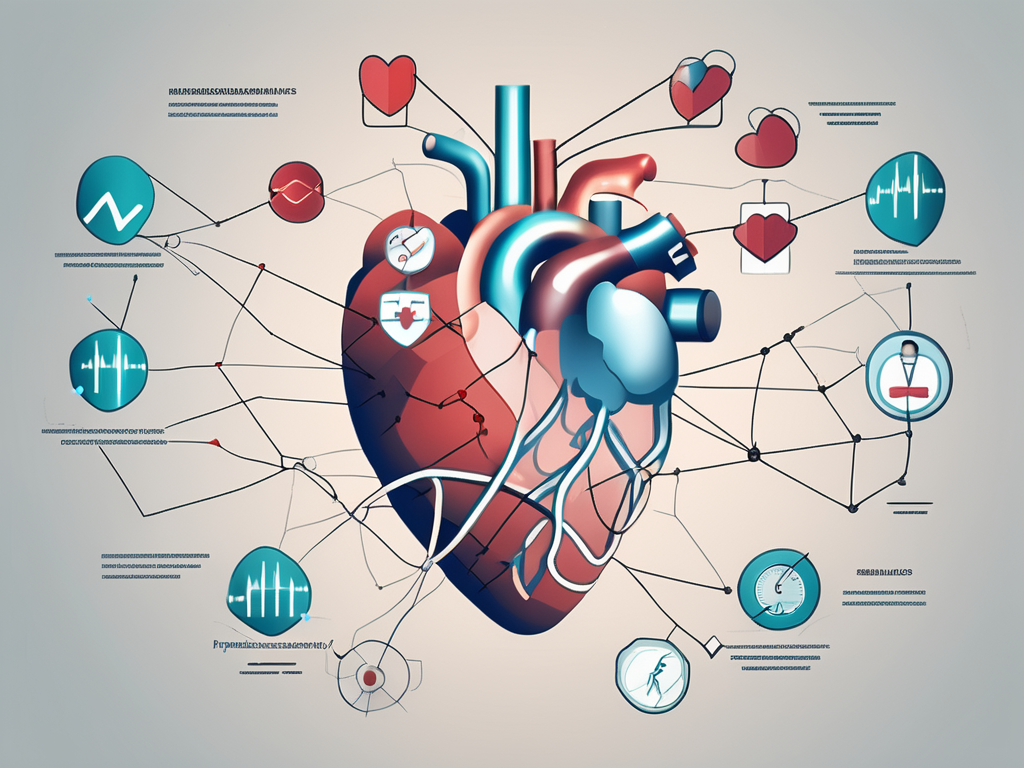In the rapidly evolving healthcare industry, data integration has emerged as a critical challenge. The abundance of digitized health information, combined with the fragmented nature of data collection systems, has created a complex landscape that poses significant obstacles to effective data management and analysis. In this comprehensive guide, we will explore the various challenges faced by healthcare organizations in integrating data, as well as the strategies and best practices that can help overcome these hurdles.
Addressing Fragmentation in Data Collection Systems
Fragmentation in data collection systems has far-reaching implications for healthcare organizations. It not only hinders the efficient exchange of information between different stakeholders but also compromises the quality and reliability of data. The fragmented nature of data systems leads to redundancies, inconsistencies, and inaccuracies, making data management and analysis a daunting task.
To address this challenge, healthcare organizations must strive for seamless integration of data collection systems. This involves developing interoperability standards and adopting technologies that enable the secure and efficient exchange of data across disparate systems. By streamlining data collection processes, healthcare organizations can minimize fragmentation and pave the way for more comprehensive and accurate insights.
The Impact of Fragmented Data Systems on Healthcare
The consequences of fragmented data systems are manifold. Patient care is often compromised due to incomplete medical records, delayed diagnoses, and incompatible treatment plans. Additionally, fragmented data makes it difficult to identify trends, patterns, and risk factors, posing a significant challenge to population health management and predictive analytics.
Furthermore, the lack of standardized data systems hampers research and innovation in healthcare. Researchers face significant difficulties in accessing and analyzing data from multiple sources, limiting their ability to uncover breakthrough insights and develop evidence-based interventions.
One of the major implications of fragmented data systems is the increased risk of medical errors. In a fragmented system, healthcare providers may not have access to a patient's complete medical history, leading to potential misdiagnoses or inappropriate treatments. This not only puts patients at risk but also adds unnecessary costs to the healthcare system.
Moreover, fragmented data systems hinder the ability to effectively track and manage public health crises. During outbreaks or pandemics, it is crucial to have real-time access to accurate and comprehensive data to make informed decisions and implement timely interventions. However, with fragmented data systems, the process of collecting, integrating, and analyzing data becomes slow and inefficient, potentially delaying critical public health responses.
Strategies for Streamlining Data Collection Processes
To streamline data collection processes, healthcare organizations can adopt a range of strategies. One such approach is the implementation of electronic health record (EHR) systems that facilitate the seamless exchange of patient information across healthcare providers. EHR systems not only enhance the accessibility and reliability of data but also improve communication and coordination between different care teams.
Another strategy is the digitization of paper-based records and the automation of data entry processes. By eliminating manual data entry, healthcare organizations can reduce errors, improve efficiency, and ensure the availability of complete and accurate information.
Moreover, the use of standardized data capture tools and techniques can significantly enhance data quality. By adhering to industry standards, healthcare organizations can ensure consistent data collection, resulting in more meaningful and reliable analysis.
Expanding on the implementation of electronic health record (EHR) systems, it is important to note that these systems not only centralize patient information but also offer advanced features such as decision support tools and data analytics capabilities. EHR systems can help healthcare providers make informed decisions by providing real-time access to critical patient data, lab results, and treatment histories. Additionally, these systems can generate comprehensive reports and insights that aid in identifying trends, improving patient outcomes, and optimizing resource allocation within healthcare organizations. In addition to digitizing paper-based records, healthcare organizations can further streamline data collection processes by leveraging mobile health (mHealth) technologies. mHealth solutions, such as mobile apps and wearable devices, enable patients to actively participate in data collection by tracking their health metrics, medication adherence, and symptoms in real-time. By integrating mHealth data with EHR systems, healthcare providers can gain a more holistic view of patient health and tailor personalized treatment plans accordingly. This patient-generated data not only enhances the accuracy of medical records but also promotes patient engagement and self-management, ultimately leading to better healthcare outcomes.
Standardizing Data Integration in the Healthcare Sector
Standardizing data integration is crucial to ensuring seamless interoperability and compatibility across different data systems in the healthcare sector. By adopting common data models, formats, and protocols, healthcare organizations can overcome the challenges posed by diverse data sources and enable the efficient exchange and analysis of information.
In today's rapidly evolving healthcare landscape, the need for standardized data integration has become more pressing than ever. With the proliferation of electronic health records (EHRs), medical devices, and wearable technologies, healthcare organizations are grappling with an unprecedented volume and variety of data. Without a standardized approach to integrating this data, healthcare providers may struggle to make informed decisions, leading to suboptimal patient outcomes.
Benefits of Standardized Data Integration in Healthcare
The benefits of standardized data integration in healthcare are manifold. Firstly, it enables a holistic view of patient health, facilitating the delivery of more personalized and effective care. With standardized data integration, healthcare providers can access a comprehensive overview of a patient's medical history, including diagnoses, medications, and treatment plans. This holistic view empowers clinicians to make well-informed decisions, leading to better patient outcomes and improved quality of care.
Secondly, standardized data integration enhances data accuracy, completeness, and consistency, enabling more robust analysis for quality improvement and research purposes. When data is standardized, it becomes easier to identify and rectify errors or inconsistencies. This, in turn, improves the reliability of data-driven insights and supports evidence-based decision-making in healthcare.
Moreover, standardized data integration fosters collaboration between healthcare organizations, research institutions, and technology vendors. It creates a shared language and framework for data exchange, enabling seamless collaboration and innovation. With standardized data, researchers can easily access and analyze data from multiple sources, accelerating the pace of medical research and enabling breakthrough discoveries.
Challenges of Implementing Data Integration Standards
While the benefits of data integration standards are undeniable, their implementation is not without challenges. One significant challenge is the diversity of data systems and structures in healthcare. Different organizations may use different coding systems, data dictionaries, and terminology, making it challenging to reconcile and harmonize data. Achieving interoperability across these disparate systems requires careful mapping and translation of data elements, which can be a complex and time-consuming process.
Additionally, the cost and complexity of implementing data integration standards should not be underestimated. It requires significant investments in technology infrastructure, staff training, and change management. Healthcare organizations must allocate resources to upgrade existing systems, establish data governance frameworks, and ensure compliance with regulatory requirements. Moreover, the transition from legacy systems to standardized data integration may disrupt operations and require careful planning and coordination to minimize any potential negative impacts on patient care.
Despite these challenges, the long-term benefits of standardized data integration in healthcare far outweigh the initial hurdles. By embracing data integration standards, healthcare organizations can unlock the full potential of their data, leading to improved patient care, enhanced research capabilities, and, ultimately, a healthier population.
Ensuring Data Security and Anonymity in Healthcare
Data security and anonymity are paramount in healthcare to protect patient privacy and comply with legal and regulatory requirements. The digitization and integration of data pose unique challenges in this regard, with healthcare organizations needing to strike a delicate balance between data access and protection.
In today's digital age, where data breaches and cyberattacks are becoming increasingly common, healthcare organizations must remain vigilant in their efforts to ensure data security and anonymity. This not only protects the privacy of patients but also helps to maintain trust in the healthcare system as a whole.
Best Practices for Data Anonymization in Healthcare
Data anonymization is a crucial aspect of ensuring patient privacy and data protection. Healthcare organizations must employ robust de-identification techniques to anonymize personal health information. This involves removing or encrypting direct identifiers, such as names and Social Security numbers, and implementing safeguards to prevent re-identification.
However, it is important to note that while anonymization is an effective method for protecting patient privacy, it can also introduce challenges in terms of data utility. Striking the right balance between anonymization and data usability is essential to ensure that healthcare professionals can still access and analyze data for research and clinical purposes.
Moreover, organizations must implement rigorous access controls and security measures to protect sensitive data. This includes encryption, user authentication, and regular security audits to identify and address vulnerabilities. By adopting a multi-layered approach to data security, healthcare organizations can significantly reduce the risk of unauthorized access and data breaches.
Technologies for Securing Sensitive Healthcare Data
Advancements in technology offer promising solutions for securing sensitive healthcare data. Encryption, both at rest and in transit, is an essential tool for protecting data from unauthorized access. By encrypting data, even if it is intercepted, it remains unreadable and unusable to unauthorized individuals.
Additionally, technologies such as blockchain can enhance data security by providing an immutable and transparent record of transactions. This decentralized system ensures that any changes made to the data can be easily traced and verified, making it highly resistant to tampering and fraud.
Healthcare organizations should also invest in robust cybersecurity measures, such as firewalls, intrusion detection systems, and regular security patches. These measures help to create a strong defense against potential cyber threats and vulnerabilities. Ongoing staff training and awareness programs are equally important to mitigate the risks of social engineering and human error, as employees play a critical role in maintaining data security.
Improving Data Quality by Eliminating Manual Processes
Manual data entry and processes introduce significant risks to data quality in healthcare. Errors, omissions, and inconsistencies can compromise the integrity and reliability of data, undermining the effectiveness of analysis and decision-making.
The Role of Automation in Enhancing Data Quality
Automation plays a crucial role in improving data quality in healthcare. By leveraging technologies such as optical character recognition (OCR) and natural language processing (NLP), healthcare organizations can automate data entry and extraction processes. This not only minimizes errors but also reduces the time and effort required for data collection and analysis.
Furthermore, automation improves the consistency and standardization of data by enforcing predefined rules and formats. This ensures that data is captured accurately and consistently across different systems and enables more robust analysis and reporting.
Where to go from here?
In conclusion, effective data integration is a critical challenge in the healthcare sector. Fragmented data collection systems, lack of standardization, data security concerns, and manual processes all pose significant hurdles to comprehensive data management and analysis. However, by implementing strategies for streamlining data collection processes, standardizing data integration, ensuring data security, and embracing automation, healthcare organizations can overcome these challenges and unlock the potential of data-driven insights to drive improved patient care and outcomes.
As healthcare organizations navigate the complexities of data integration, the need for specialized expertise and innovative solutions becomes increasingly clear. Wednesday can help you identify relevant opportunities to incorporate modern services & standards for health information exchange such as HL7 & FHIR. If you’d like to learn more about our services book a free consult here.






